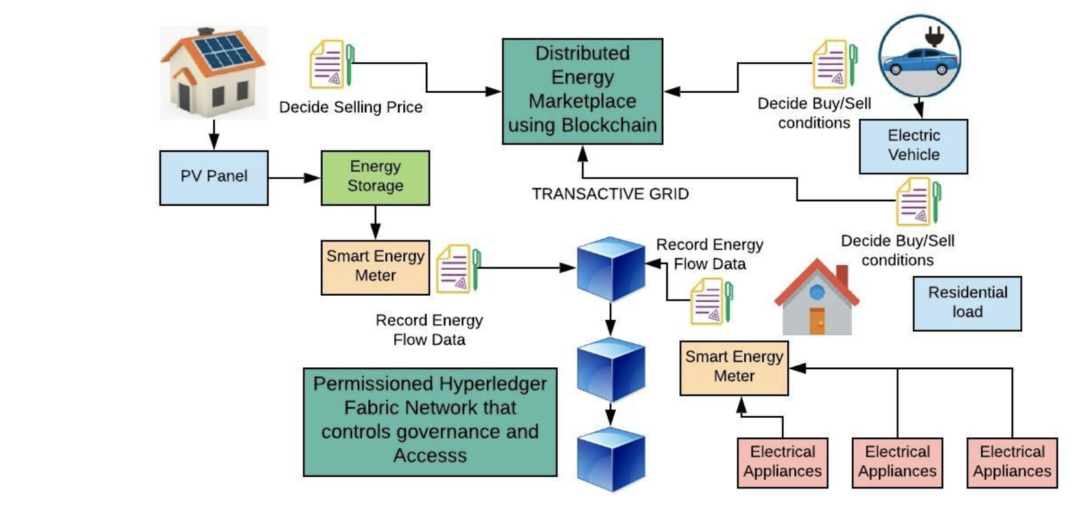P2P Energy Trading
The United States electrical grid outdated, legacy systems are inefficient, vulnerable to attack and impractical in our growing digital age. Furthermore, the energy production landscape is being reshaped by distributed energy resources (DERs) remotely controllable items part of the Internet of Things (IoT). DERs in the form of photovoltaic panels, electric vehicles, smart appliances, and battery storage systems are great examples of some of the technologies revolutionizing our energy dependent world. When used intelligently, these DERs can reduce cost, improve reliability, and integrate renewable resources in the electric grid.
In order to use these DER’s intelligently, we must take a holistic approach and apply technologies such as blockchain based smart contracts, IoT systems, and grid edge devices. Blockchain-based smart contracts present an opportunity to increase the speed, scale, and security of transactive energy applications. Additionally, applying blockchain technology to this system means that we can eliminate the middlemen involved in the energy market. This technology will enable peer to peer exchanges between energy consumers, producers, and other stakeholders. This would reduce costs, secure transactions, and decentralize storage and validate legitimate actions in the network.
The Industrial Internet of things(IIoT) is a term used to describe a network of a multitude of industrial devices connected by communications technologies. These IIoT systems can do a lot more will data in the case monitoring, collecting, exchanging, analyzing and delivering valuable insights. This combination of machine-to-machine interaction with industrial big data analytics is a key component of IIoT. However, the demand for energy in IIoT systems increases as it scales to meet industry standards. To resolve this demand, peer-to-peer (P2P) energy trading is a proposed solution. We term is P2P Energy Trading System as Energy Internet of Things(EIoT).
The ASU Blockchain Research Lab has partnered with SRP, the Salt River Project to address the inadequate infrastructure of our electrical grid. Raj Sadaye, a graduate student researcher at the ASU Blockchain Research Lab is leading the charge with SRP to meet this demand. The labs distributed ledger technology infrastructure of the peer-to-peer energy trading system is built upon Hyperledger Fabric. Hyperledger fabric is a modular and extensible open-source system for deploying and operating permissioned blockchains. See the following graphics:

As detailed further in Raj Sadaye’s research, he describes the need for transformation in the current power distribution system. At the ASU Blockchain Research Lab, we believe it is important to build a system to manage interactions between these autonomous prosumers. Furthermore, we believe that transactive energy systems built upon the Hyperledger Fabric network can provide a solution for this. This solution is detailed as the following benefits to the consumer: (1) Better utilization of grid assets can lower costs, presently during high demand hours. (2) Greater reliability and resilience. (3) Increased choice and information will give consumers greater control over personal energy use. (4) Increased use of renewable energy resources gives individual consumers the satisfaction of contributing to larger, societal goals.
As we explore the four benefits to the consumer, we can also draw conclusions to the value added this system will provide for energy producers and other EIoT stakeholders. The success of the ASU Blockchain Research Lab’s initiative to transform our outdated electrical grid will contribute to the enhanced security, efficiency, and economic value of this new energy market place.